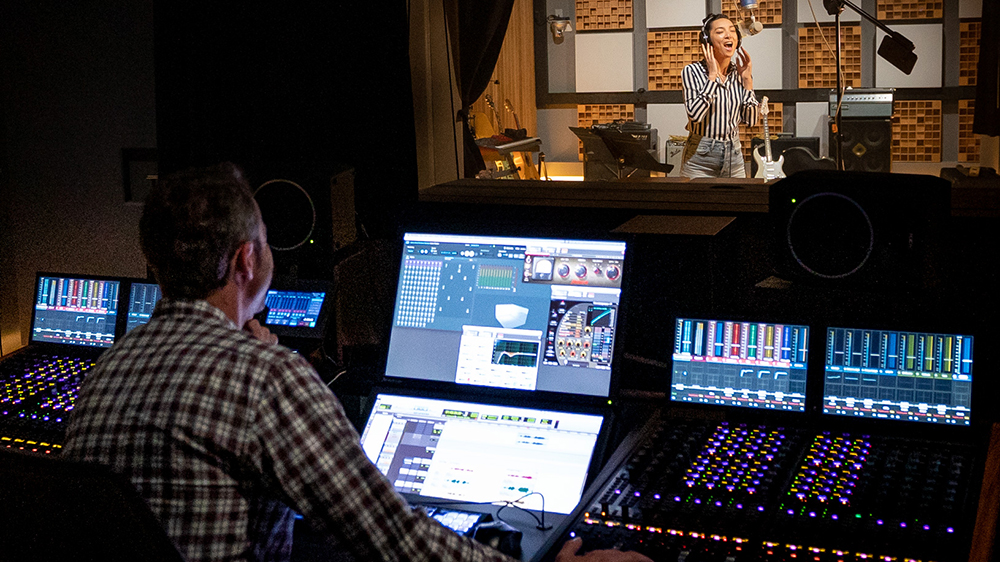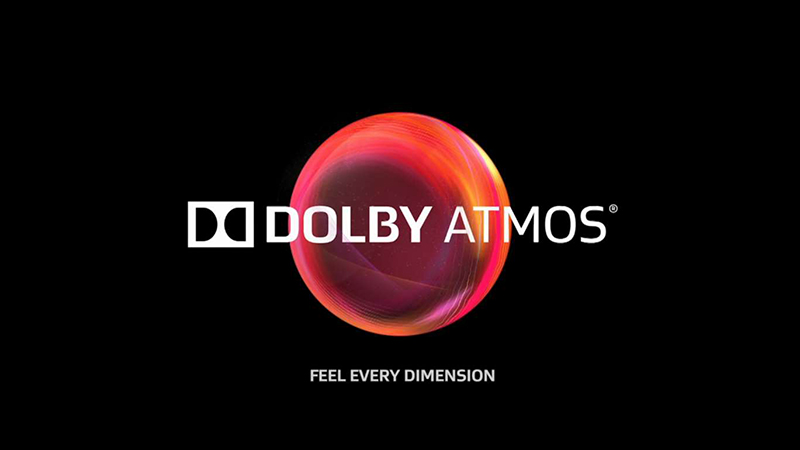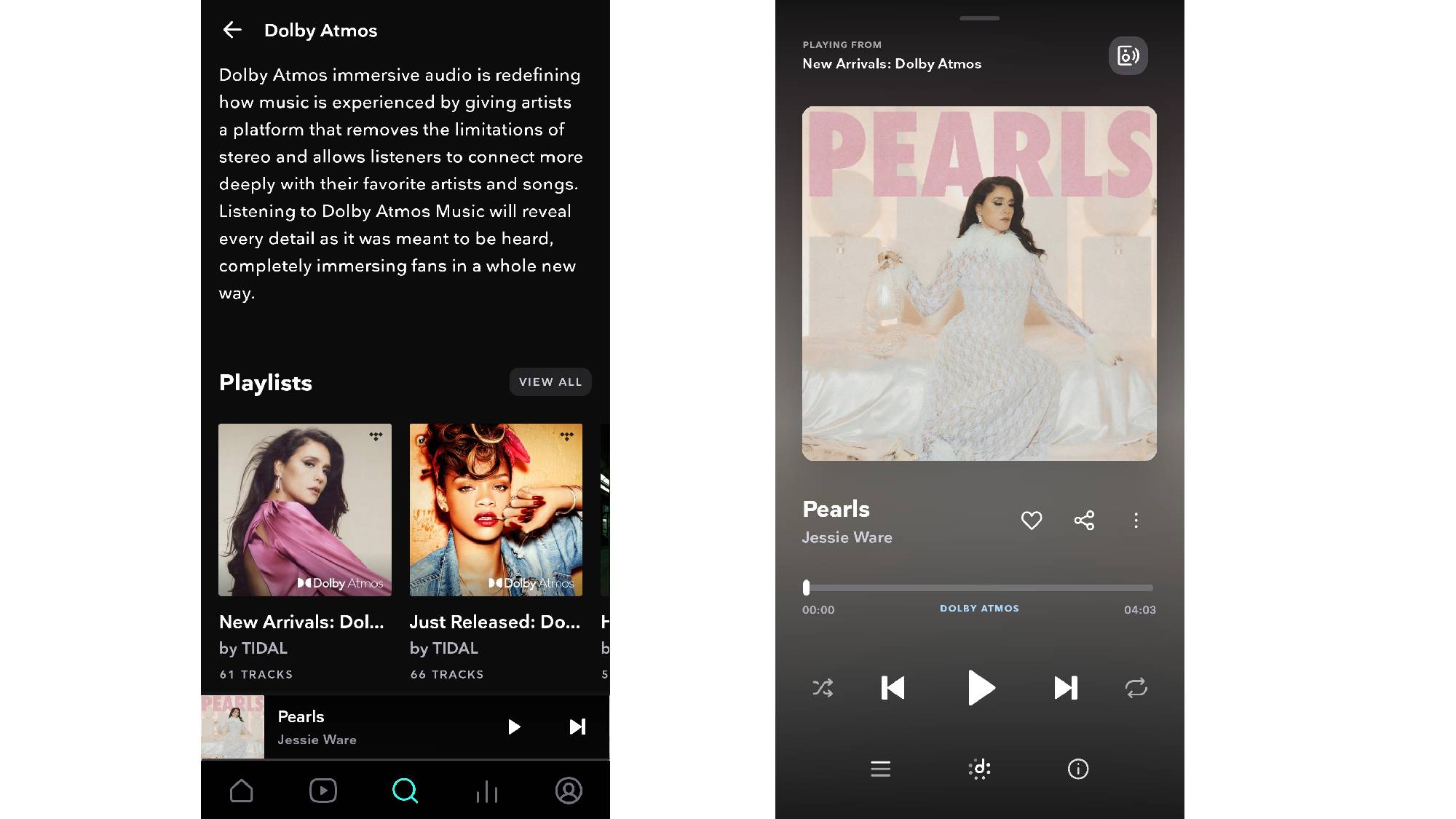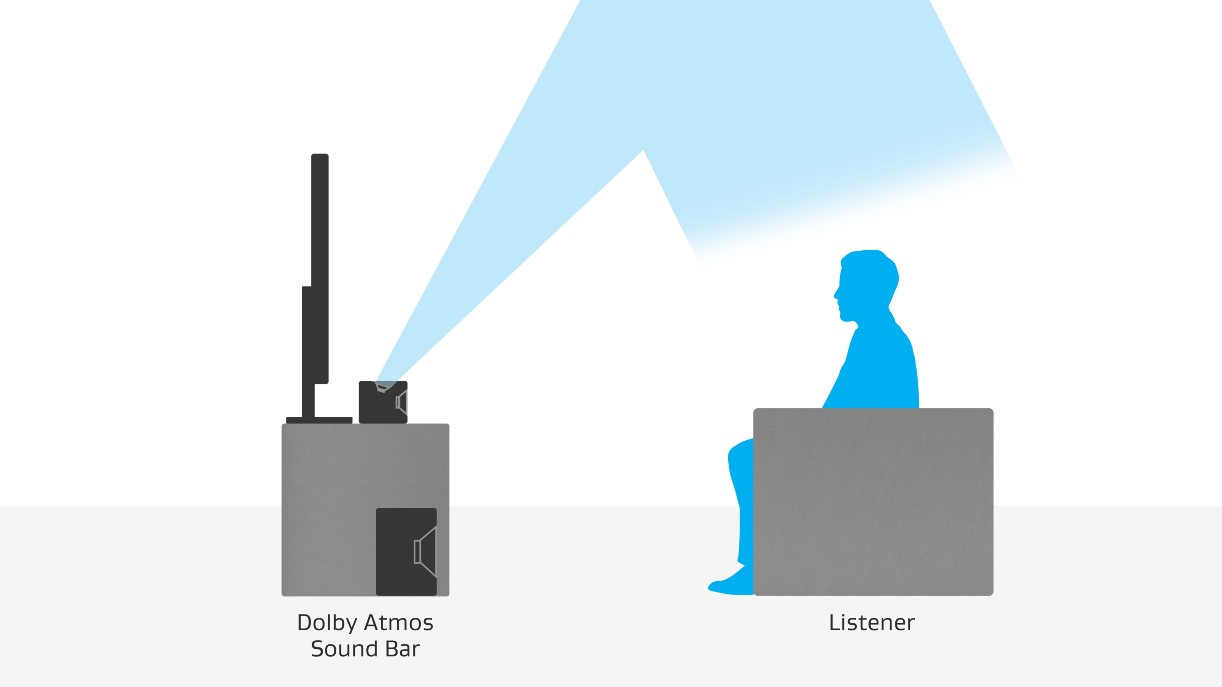Dolby Atmos Music: everything you need to know about the spatial audio tech
Listen to songs in surround sound

Dolby Atmos Music has added a whole new dimension to the music-listening experience. Quite literally.
Dolby's immersive audio technology – simply 'Dolby Atmos' – may have been designed for movie surround sound in multiplex and home cinemas, but in the past three or so years it has found its way into the music realm too. Today, thousands of Dolby Atmos Music tracks are now available on streaming services such as Tidal and Apple Music, and an increasing number of Atmos-capable devices – including phones, TVs, soundbars and wireless speakers – can play them. Dolby even has a dedicated Dolby Live venue in Las Vegas where concerts can be engineered and delivered to audiences in Dolby Atmos in real time.
As Dolby Atmos Music essentially encourages music to be created in or produced as surround sound instead of good ol' stereo, it seems to have divided opinion in its fledgling years. While the big players such as Apple and Amazon are embracing the technology in their services and products, Radiohead producer Nigel Godrich has, for example, snubbed the technology.
So is Dolby Atmos Music any good? Does it make music sound better? And what services and devices support it? Read on for everything you need to know...
What is Dolby Atmos Music?

Put simply, it's a way of remixing songs using Dolby Atmos technology.
Atmos is an object-based surround sound tech that started life in cinemas but has since made its way into home cinema set-ups all over the world. It differs from traditional 5.1 and 7.1 channel set-ups, not only in how it allows engineers to create surround sound but also by adding extra channels overhead (for example, with speakers mounted in the ceiling). The result? A much more engrossing sound, creating a dome of audio with the audience at the centre.
It's much more precise than 'standard' surround sound. Thanks to the technology's new method of calibration, sound engineers can precisely place sounds at various points in the soundstage, rather than just pumping them through a select audio channel. It makes for a much more realistic and immersive home cinema experience.
And now it can do the same for music. Artists can create music in Dolby Atmos in the studio, or music can be converted to Atmos purely in the post-production process.
Where can I listen to Dolby Atmos Music? What music is available?

In 2020, we saw the first tranche of 50 Universal Studio releases hit streaming services. These included Kraftwerk's 3D The Catalogue, Hans Zimmer's Live in Prague and R.E.M.'s Automatic For The People (25th Anniversary Edition). Nowadays, however, all tastes are more or less catered for: there's everything from Rodriguez Jr.'s Bliss to Public Enemy's Don't Believe The Hype to Rush's Tom Sawyer, and everything in between.
As well as remixing existing songs, new songs are also being produced using Dolby Atmos. Several of Universal Music Group's studios are now kitted out with Dolby Atmos Music mixing tech, including Capitol Records Studios in Hollywood, Abbey Road Studios in London, and Nashville's Berry Hill Studios. Head to one of the streaming services that support it, such as Tidal, and you'll see a section dedicated to Dolby Atmos Music tracks, presented as tracks, albums and playlists. Rihanna, Gregory Porter, Nina Simone, Avicii, Coldplay, Jessie Ware, Paramore, Lil Keed... Dolby Music is gaining traction in the music industry.
If you have a pair of headphones to hand, you can see how Dolby Atmos renders music in these Marvin Gaye and Jain video clips on Dolby's website.
Dolby Atmos Music can be found on Apple Music, Tidal and Amazon Music Unlimited so subscribers to any one of those streaming services have access to a wealth of tracks at their fingertips. Tidal users should know that the top-tier Tidal HiFi Plus subscription is needed to unlock Dolby Atmos Music.
What devices support Dolby Atmos Music?

Dolby Atmos Music tracks should work on any device that can handle Dolby Atmos. And apparently, there are now a billion Atmos devices out there! Atmos-supporting devices include TVs, soundbars, laptops, and even tablets and smartphones. Of course, you're going to get a much more impactful listen from a home cinema set-up over a smartphone. But if you're on the go, you should definitely notice the difference from an Atmos-ready phone.
The Amazon Echo Studio and Amazon Music became the first wireless speaker and music service respectively to deliver the "immersive music experience". As Apple Music's spatial audio tracks are powered by Dolby Atmos technology, many of Apple's hardware now supports Atmos too, including the newer iPhones, iPads, Apple TV 4K, AirPods 3, AirPods Pro 2 and the HomePod 2 and HomePod Mini speakers.
Sonos has made a big splash with its first dedicated Dolby Atmos-powered spatial audio speaker, the Era 300, which is designed to "create the best standalone spatial audio experience of any single speaker" says Sonos. True to form, we've found that to be the case, with its five-star performance – especially with spatial audio tracks – sounding as immersive and convincing as we've ever heard.
Other current Atmos-compatible mobile devices include the Samsung Galaxy S23 and Galaxy Fold, Sony Xperia 1 III and OnePlus 11.

On the home cinema front, most of the AV receivers released in the last five or so years are compatible with Atmos, including those at the budget end of the market. Those with AV amps and speaker packages don't have to drill holes in the ceiling to install ceiling-mounted speakers for Atmos's height channels, either. Instead, a dedicated Atmos system can include upward-firing drivers on the front speakers. These fire out sound to rebound off your ceiling, creating a similar effect to a ceiling-mounted speaker. Atmos-enabled speaker modules are also increasingly available – when placed on top of your existing speakers, they deliver Atmos sound from a compatible receiver.
If you don't want a full surround sound system, you could instead opt for a Dolby Atmos soundbar, such as the Sony HT-ST5000, Sonos Arc or Beam Gen 2, or Sennheiser Ambeo Max or Ambeo Plus.
Most high-end TVs nowadays are Atmos-compatible, and some are better kitted out than others (we're looking at you, Panasonic MZ2000), though beware that you won't get the same effect as from a speaker package due to TVs' typically thin speakers.
And as for Blu-ray players, Dolby says as long as yours conforms to the latest specifications and can output a bitstream audio signal for your AV receiver to decode, it should play Atmos Music with no problem.
Of course, there is also now the Dolby Live Atmos concert experience if you fancy a trip to Las Vegas...
Is Dolby Atmos Music worth it?

The question is, does music sound good mixed in Dolby Atmos? Or is good old-fashioned stereo better? Well, perhaps unsurprisingly, this comes down to preference – some people simply prefer a two-channel production over a surround sound one. And, actually, the track you're listening to might sway you one way or another too – we've heard some songs we really like in Atmos and some we don't so much. As we penned not long ago, we think a problem with Dolby Atmos is its consistency. It depends on how they have been mixed, and genre is a factor too.
Your Dolby Atmos experience is naturally going to come down to how effective your Dolby Atmos device/set-up is too. Dolby Atmos Music through a surround system will be a better advert for the technology than Dolby Atmos Music through phone speakers or pair of everyday headphones.
Of course, there's only one way to find out whether you like Dolby Atmos Music or not, and that's to try it on the best device possible. And if you find out you do, you'll certainly love what the technology can do with movies.
MORE:
Apple’s Spatial Audio is a music revolution, but try it without the headphones
Read our five-star Sonos Era 300 review
The best Dolby Atmos soundbars you can buy
The 22 best Dolby Atmos movie scenes to test your home cinema surround sound system
Get the What Hi-Fi? Newsletter
The latest hi-fi, home cinema and tech news, reviews, buying advice and deals, direct to your inbox.
Becky is the managing editor of What Hi-Fi? and, since her recent move to Melbourne, also the editor of the brand's sister magazines Down Under – Australian Hi-Fi and Audio Esoterica. During her 11+ years in the hi-fi industry, she has reviewed all manner of audio gear, from budget amplifiers to high-end speakers, and particularly specialises in headphones and head-fi devices. In her spare time, Becky can often be found running, watching Liverpool FC and horror movies, and hunting for gluten-free cake.

